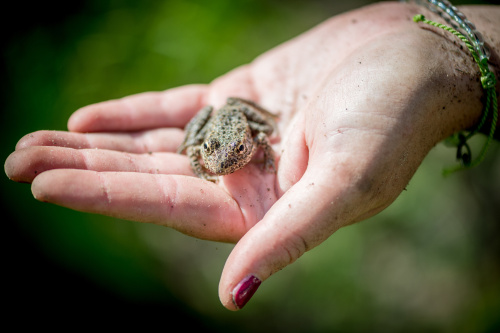WASHINGTON — The dusky gopher frog is a somewhat defenseless creature, confined these days to a handful of pampered ponds in a Mississippi forest and at “serious risk of extinction,” according to a government lawyer.
Yet it managed Monday to divide the understaffed Supreme Court into familiar camps and raised the possibility that the first case of the 2018 term might end in a tie. Or that the outcome might have to wait until the Senate confirms a ninth justice – Brett Kavanaugh or someone else.
There was talk of “draining the swamp,” but in this case, a literal one.
The term began with an empty space at the right end of the bench; the court was rearranged in anticipation of a new member.
Seats are assigned by seniority, and Anthony Kennedy’s retirement meant that Justice Clarence Thomas is now the court’s longest-serving member. By tradition, he sits at the right hand of Chief Justice John G. Roberts Jr. Justice Ruth Bader Ginsburg now sits to his left.
Ginsburg and the court’s other liberals seemed inclined to believe that the U.S. Fish and Wildlife Service had not exceeded its authority in designating more than 1,500 acres in Louisiana – about 50 miles from the places the frogs are known to live now – as “critical habitat” for the species’ future survival.
The frogs once lived there, although they haven’t been seen since the 1960s.
The court’s conservatives were concerned about the rights of the property owners, in this case, a family that leases its land to Weyerhaeuser, the timber giant that harvests trees there, but also has development plans for the land.
The Louisiana property has something essential for the dusky gopher frog’s reproduction, the poetically named “ephemeral ponds.” That refers to low-lying areas that fill with water at certain times of the year – when the frog lays eggs – but then dry out. Because of that, the ponds can’t support fish, which would eat the eggs.
But everyone agrees that, although the land has the ponds, it does not have other physical characteristics the frogs need.
Chicago lawyer Timothy Bishop, representing Weyerhaeuser, said the law only allows the government to designate as critical habitat lands where the species could now live. (The land is something of an insurance policy, should things go bad in the frogs’ current home.)
Justice Elena Kagan disputed that. What if the land could be made habitable with reasonable alterations, she wondered.
And Ginsburg questioned whether the company and the family that owns most of the land had yet suffered any loss that would make the case ripe for a high court decision.
Copy the Story LinkSend questions/comments to the editors.



Success. Please wait for the page to reload. If the page does not reload within 5 seconds, please refresh the page.
Enter your email and password to access comments.
Hi, to comment on stories you must . This profile is in addition to your subscription and website login.
Already have a commenting profile? .
Invalid username/password.
Please check your email to confirm and complete your registration.
Only subscribers are eligible to post comments. Please subscribe or login first for digital access. Here’s why.
Use the form below to reset your password. When you've submitted your account email, we will send an email with a reset code.